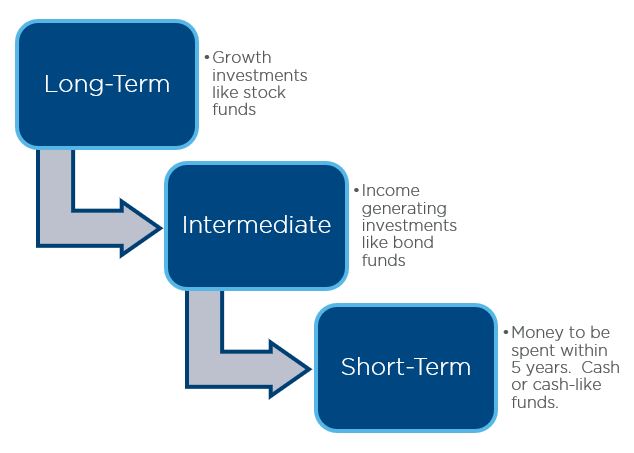Working In The U.S. Temporarily? Here’s What You Need To Know About Retirement
August 17, 2018
We get many retirement benefits questions on our Financial Helpline from professionals who are working in the United States now but plan to return eventually to their home countries or take another ex-pat assignment. Frequent questions include: should I participate in my company’s 401(k) plan, and if so, should I choose to make a pre-tax, Roth or after-tax voluntary contribution? How can I access my savings when I leave the U.S.?
Get professional tax advice
If you’re a professional from another country working legally in the United States and do not have permanent resident status (e.g., a “green card”), the U.S. system of taxation can seem like a maze: one wrong move and you’re stuck in a corner. Do not try and navigate this yourself. Seek professional tax advice from a tax preparer who is experienced in ex-pat/non-citizen issues. You’ll need guidance on tax withholding, tax filing, benefits choices and what to do when you leave the U.S.
Ask ex-pat colleagues first for referrals to a tax professional who has experience working with people like you. It’s not expensive and could save you from financial and legal problems later. For a basic overview of types of U.S. tax preparers, see this post on How to Find a Good Tax Preparer.
What do I need to know about U.S. retirement savings programs?
The U.S. retirement savings system is made up of Social Security, defined contribution plans (401(k), 403(b) or 457), traditional pension plans (defined benefit), and individual retirement accounts (IRA and Roth IRA).
Social Security
This is the government-sponsored retirement system, similar to what’s often called a “public pension” in other countries. As a non-citizen employee, you will likely pay a mandatory 6.2% of your pay on the first $128,400 of your 2018 wages into the system while you are working in the U.S. You’ll also pay 1.45% of your wages into Medicare, which you will not recoup unless you continue to be a U.S. resident. Your employer will also make contributions on your behalf.
If you do not plan to live in the U.S. when you retire, you may or may not be able to receive Social Security retirement benefits. It depends on how long you paid into the system, your immigration status, your country of residence, and whether you started receiving payments before you left the U.S. See this Social Security Administration Guide for Your Payments While You Are Outside The United States as well as Can I Still Receive Social Security If I Move Abroad?
401(k), 403(b) and 457 plans
Most large employers offer employer-sponsored retirement savings plans, such as 401(k) and 403(b) plans. An employee may contribute a percentage of their gross pay each period to a tax-advantaged account. Frequently, the employer will match up to a set percentage of what you contribute or will sometimes make contributions regardless of whether you make your own contributions. You’ll get to choose how your contributions are invested from a menu of mutual funds or other investing vehicles.
You may also get to choose whether you contribute your money into a pre-tax (traditional), after-tax (Roth), or after-tax voluntary account. See tips below for choosing what works for you. In 2018, you may typically contribute up to $18,500 to your employer’s plan annually plus another $6,000 if you’re 50 or older.
IRA and Roth IRA
If you are considered a resident for U.S. tax purposes (have U.S. earned income, have a Social Security number and meet the substantial presence test), you may open a traditional or Roth IRA. However, if you are a non-citizen and don’t plan to seek U.S. citizenship or permanent residency, you may not be able to reap all the benefits of an IRA or Roth. If you’re eligible, you may contribute up to $5,500 annually to a traditional or Roth IRA plus an extra $1,000 if you’re 50 or older.
Traditional pension plans
These are no longer widely available to new employees, but some larger companies and state/local government jobs still offer them. A pension may be fully funded by employer contributions or with a combination of employer and employee contributions. Typically, it takes 10-20 years to be “vested” in a pension, where the employee is eligible to receive a fixed monthly payout at retirement.
Should I enroll in my 401(k)?
Saving in your employer-sponsored retirement plan has multiple benefits, even if you don’t plan to continue working and living in the U.S. later in your career. If there’s a match on your contributions, that’s like earning additional income. There’s the potential for tax-deferred or tax-free growth, depending on the type of contributions you make. Plus you really can’t beat the ease of contributions deducted automatically from your paycheck!
Always consider your future taxes
For non-citizens making decisions about which retirement contribution type to choose, you’ll need to consider where you will be living when you withdraw the money, how old you will be when you plan to withdraw it, and whether you think you’ll be a U.S. permanent resident or citizen at that time.
If you expect to still be a non-citizen when you withdraw the money, note that you are required to file a U.S. tax return in any year in which you have U.S. income, which includes retirement plan withdrawals. Additionally, according to the IRS, “Most types of U.S.-source income paid to a foreign person are subject to a withholding tax of 30%, although a reduced rate or exemption may apply if stipulated in the applicable tax treaty.” You may or may not owe that rate in taxes, but the funds will be withheld from the distribution regardless.
If you’ve overpaid through the withholding, you would get a refund after you’ve filed your tax return for that year. See this IRS U.S. Tax Guide for Aliens for in-depth reading. Now do you see why I say you need a tax advisor if you’re an ex-pat working in the U.S.?
If by the time you withdraw the money, you have become a U.S. citizen or a permanent resident – but are living overseas – you won’t be subject to the 30 percent withholding. You will, however, have to file a U.S. income tax return every year, regardless of your income. This blog post reviews the rules for U.S. citizens or permanent residents living outside the U.S.
Pre-tax, Roth or After-tax voluntary contributions?
The financial planning goal, then, is to minimize taxes and penalties on your future retirement plan distributions. Remember – you’re going to pay income taxes on whatever has not been taxed before. Your company’s matching or profit-sharing contributions to your retirement plan are always pre-tax, so they will be taxed when you withdraw them. How much of your own retirement contributions will be taxed depends on how you contribute:
Traditional pre-tax contributions: They are deducted from your taxable income, so you’ll pay less in income taxes today. Earnings grow tax-deferred for retirement. After age 59 1/2, you may withdraw them without penalty, paying US income taxes on whatever you take out. Prior to that, you may withdraw them only if you a) retire b) leave the firm or c) have an extreme financial hardship. Pre-tax contributions up to your plan’s percentage are generally eligible to receive the match, which is also in pre-tax dollars. See this blog post for more details.
Roth contributions: Roth 401(k) contributions are made after-tax and grow tax-free for retirement if withdrawn 1) after 5 years and 2) after age 59 ½. If you meet those requirements for a distribution, your Roth distribution would not be included in your taxable U.S. income. See this IRS tool to see if your Roth distribution could be taxable. However, your home country (or country of residence) could tax it, depending on the tax treaty with the U.S.
If your plan allows, you can leave the funds in the account until after age 59 ½. If you must take an earlier distribution after you’ve left the firm, you will only be taxed and penalized on the related growth and any company contributions, not your original contributions. See this IRS Guide to Roth 401(k)s for more information and this blog post for when a Roth 401(k) works best.
After-tax voluntary contributions: Many employer-sponsored plans permit after-tax voluntary contributions in excess of, or as a substitute for, Roth or pre-tax contributions. This will give you some flexibility, as you may withdraw those contributions at any time (although growth of your funds will be subject to tax). If you plan to withdraw contributions after leaving the firm, taxation is similar to the Roth 401(k). Your retirement plan may also permit you to convert after-tax voluntary contributions to the Roth account, which could come in handy if you end up staying in the U.S., or roll them over to a combination of a traditional IRA and Roth IRA when you leave the firm. (See this blog post for strategies.)
On the down side, you won’t receive an employer match on voluntary contributions. Your original contributions can be withdrawn at any time tax-free, but any earnings or growth made in the account will be taxed when withdrawn. (That means earnings which are withdrawn before 59 ½ will be taxed and subject to an additional 10 percent penalty.)
If you leave the U.S., are you required to take distributions?
If you leave to work and reside overseas, you would be able to take a distribution from your company’s retirement plan but are generally not obliged to take any until age 70 1/2. If possible, leave it where it can continue to grow protected from taxes. Pre-tax contributions that are later distributed are included in your taxable income, and if taken prior to age 59 1/2, may be subject to an additional 10% penalty.
Ask for guidance
If your company offers a workplace financial wellness benefit, talk through the pros and cons of your choices with a financial coach. Your financial coach can help you understand the implications of your choices given your personal situation. Also, while you’re working in the U.S., don’t forget to use a tax advisor experienced in non-resident taxation., such as a certified public accountant or an enrolled agent. This is well worth the relatively low cost to get good tax advice.
A version of this post was originally published on Forbes.



